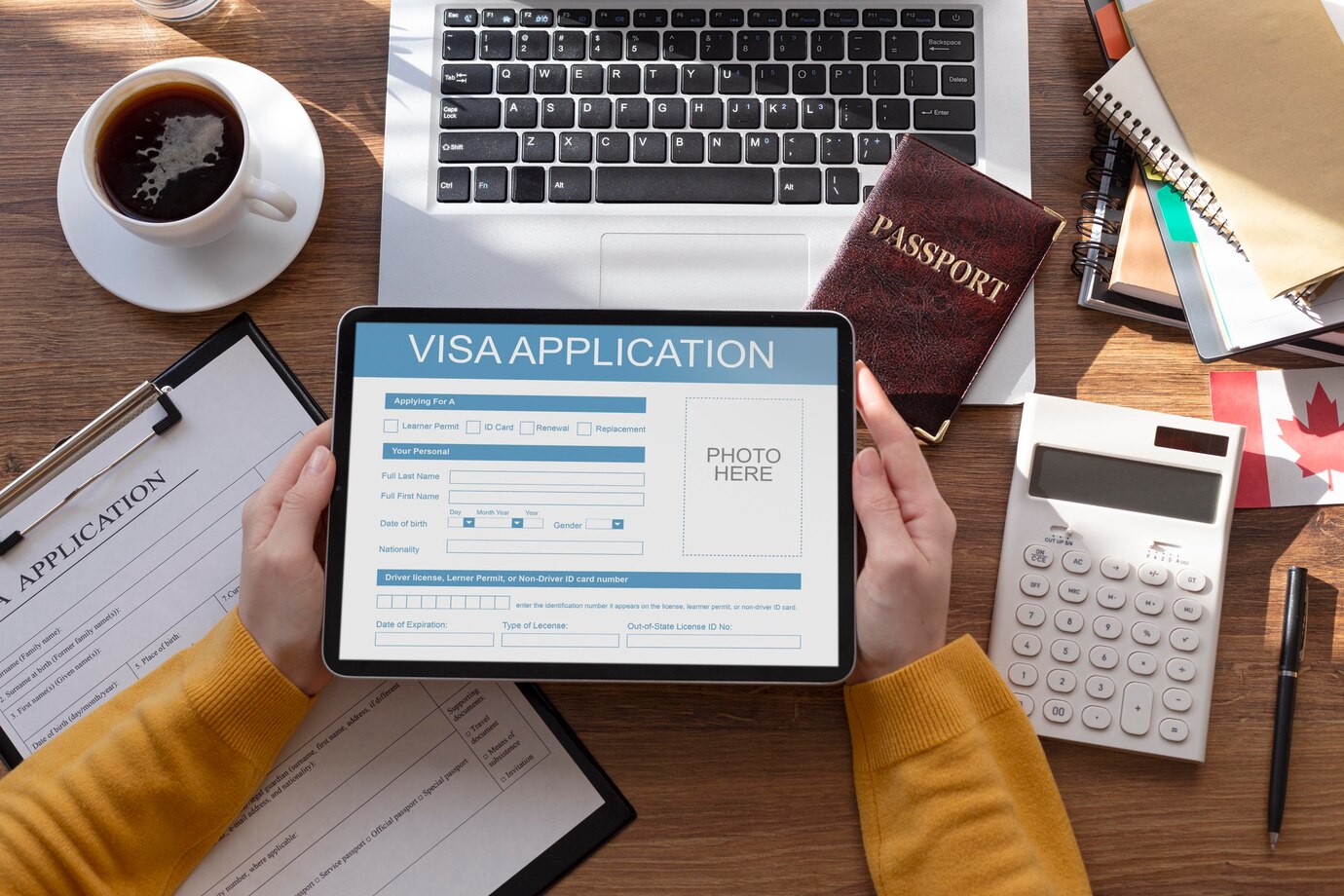Forget overpriced photo booths and stressful studio visits! With the rise of online tools for visa photo editing, capturing perfect visa photos has never been easier. Whether you’re applying for a new passport, navigating the visa labyrinth, or renewing your ID, these convenient online platforms empower you to take control of your application picture. Step into the world of digital snapshots and discover a treasure trove of comprehensive tips and tricks to guarantee your Visa photo online shines just as brightly as your travel dreams. From mastering selfie lighting to ensuring biometric compliance, this article will be your ultimate guide to acing that picture – without leaving the comfort of your home.
The Importance of Visa Photos
Visa photos may seem like a minor aspect of the extensive visa application process, but their significance cannot be overstated. These small, seemingly routine images carry substantial weight in the eyes of immigration authorities. Here’s a closer look at why visa photos are so crucial:
- Identification and Security: Visa photos serve as a visual means of identifying individuals and play a vital role in ensuring the security of borders. By providing a clear image of the visa applicant, authorities can cross-verify the person’s identity against other documents and databases, minimizing the risk of identity fraud and unauthorized entry.
- Streamlining the Application Process: A properly prepared visa photo contributes to the efficiency of the visa application process. Consistent adherence to photo guidelines reduces the likelihood of application rejections or requests for additional documentation, leading to smoother and faster processing.
- Global Standardization: Visa photo requirements are often standardized across countries, creating a global benchmark for identification. This standardization facilitates international travel by establishing a common ground for visual verification, irrespective of the destination country.
- Preventing Impersonation: The visual aspect of a visa photo makes it challenging for individuals to impersonate someone else during the application process. Authorities can quickly compare the photo with the person presenting the visa, adding an extra layer of security against fraudulent activities.
- Ensuring Consistency: Visa photos contribute to the overall consistency and reliability of immigration procedures. By maintaining specific criteria for photo quality, background, and facial expression, authorities can establish a uniform and dependable system for processing visa applications.
In essence, visa photos are not just mundane images; they are integral components of a comprehensive security and identification framework that nations employ to regulate and manage international movements. Recognizing the importance of these photos empowers travelers to approach the visa application process with the seriousness and attention to detail that it demands.
Understanding the Rules of Visa Photography
The process of obtaining a visa involves strict adherence to specific guidelines, and visa photography is no exception. Each country imposes its own set of regulations governing the visual aspect of identification in visa applications. These guidelines encompass various elements, all of which contribute to creating a standardized and secure system for visual verification.
- Background Specifications: One of the primary considerations in visa photography is the background. Most countries require a plain white or light-colored background to ensure a clear and unobstructed view of the applicant’s face. This neutral background minimizes distractions and aids in the easy identification of facial features, a crucial aspect for immigration authorities.
- Facial Expression Requirements: Facial expression is another critical factor. While it may seem like a minor detail, maintaining a neutral expression is often a stipulated requirement. This neutrality ensures that the applicant’s face is easily recognizable and can be compared accurately with other identification documents.
- Head Size and Position: Countries may also specify the size and position of the head within the photograph. These requirements are not arbitrary; they are designed to create consistency in visual identification. The correct framing of the face allows for a standardized approach, making it easier for authorities to process and verify visa applications efficiently.
- Accessory Restrictions: Additionally, guidelines often address the issue of accessories. Many countries prohibit the use of accessories such as hats, scarves, or sunglasses in visa photos. This restriction ensures that the applicant’s face is fully visible, leaving no room for ambiguity or potential hindrance in the identification process.
- Digital Photo Considerations: A subpoint worth noting is the aspect of digital versus printed photos. Some countries now accept digital photos for online visa applications. In such cases, applicants must ensure that the digital file meets specific requirements, including resolution, file format, and background specifications. Understanding the transition to digital formats is crucial for those navigating the evolving landscape of visa application procedures.
Understanding these rules is paramount for visa applicants. Failure to comply with any of these specifications may result in delays, additional documentation requests, or even the rejection of the visa application. Therefore, individuals must carefully study and adhere to the specific guidelines outlined by the immigration authorities of the country they intend to visit. This understanding not only demonstrates a commitment to the visa application process but also significantly increases the chances of a successful and smooth approval.
Choosing the Right Photographer
Selecting the right photographer is a pivotal step in ensuring the success of your visa photo. The expertise and attention to detail of the photographer can significantly impact the compliance of the photo with the stringent guidelines set by immigration authorities.
A professional photographer experienced in visa and passport photos is often the best choice. These specialists are well-versed in the specific requirements, ensuring that your photo meets the necessary criteria for a seamless application process. Here are additional considerations to keep in mind:
| Criteria | Importance | Explanation |
| Knowledge of Guidelines | High | Ensures awareness of specific visa photo requirements for different countries. |
| Quality Equipment | High | Essential for producing clear, high-resolution images that meet technical standards. |
| Attention to Detail | High | Important for adhering to specific guidelines regarding head size, framing, and background color. |
| Experience with Biometrics | Medium | Relevant if the destination country employs biometric technology for visa identification. |
| Online Submission Compatibility | Medium | Beneficial for photographers who understand the requirements for digital submissions in online visa applications. |
- Knowledge of Guidelines: A qualified photographer should be familiar with the visa photo guidelines of various countries. As these guidelines can vary, a photographer who stays informed about the specific requirements of different destinations is invaluable.
- Quality Equipment: The use of high-quality photography equipment is essential for producing clear and detailed images. A professional photographer is likely to have access to advanced cameras, lighting setups, and editing tools, ensuring that your visa photo meets the necessary technical standards.
- Attention to Detail: Visa photo guidelines often specify minute details, such as head size, framing, and background color. A meticulous photographer pays attention to these details, ensuring that the final image adheres precisely to the requirements.
- Experience with Biometric Technology: Some countries incorporate biometric technology into their visa application processes. A photographer familiar with biometric requirements ensures that your photo aligns with the technological specifications for successful biometric verification.
- Online Submission Compatibility: With the increasing trend of online visa applications, it’s beneficial to choose a photographer who understands the specific requirements for digital submissions. They should be able to provide you with a digital file that meets the criteria for online applications, including resolution and file format.
Choosing a photographer with these qualities ensures that your visa photo is not only compliant but also of high quality, increasing the likelihood of a smooth application process.

